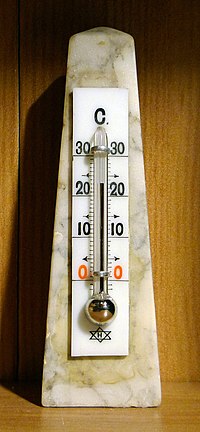
Photo from wikipedia
Abstract How to assess the temperature sensitivity (Q10) of soil organic matter (SOM) decomposition and its regional variation with high accuracy is one of the largest uncertainties in determining the… Click to show full abstract
Abstract How to assess the temperature sensitivity (Q10) of soil organic matter (SOM) decomposition and its regional variation with high accuracy is one of the largest uncertainties in determining the intensity and direction of the global carbon (C) cycle in response to climate change. In this study, we collected a series of soils from 22 forest sites and 30 grassland sites across China to explore regional variation in Q10 and its underlying mechanisms. We conducted a novel incubation experiment with periodically changing temperature (5–30 °C), while continuously measuring soil microbial respiration rates. The results showed that Q10 varied significantly across different ecosystems, ranging from 1.16 to 3.19 (mean 1.63). Q10 was ordered as follows: alpine grasslands (2.01) > temperate grasslands (1.81) > tropical forests (1.59) > temperate forests (1.55) > subtropical forests (1.52). The Q10 of grasslands (1.90) was significantly higher than that of forests (1.54). Furthermore, Q10 significantly increased with increasing altitude and decreased with increasing longitude. Environmental variables and substrate properties together explained 52% of total variation in Q10 across all sites. Overall, pH and soil electrical conductivity primarily explained spatial variation in Q10. The general negative relationships between Q10 and substrate quality among all ecosystem types supported the C quality temperature (CQT) hypothesis at a large scale, which indicated that soils with low quality should have higher temperature sensitivity. Furthermore, alpine grasslands, which had the highest Q10, were predicted to be more sensitive to climate change under the scenario of global warming. &NA; Path analysis indicated that environmental variables and substrate properties together explained 52% of total variation in temperature sensitivity (Q10) of soil organic matter decomposition across all sites. Soil pH and soil electrical conductivity (EC) explained most variation in Q10. Figure. No caption available.
Journal Title: Global Change Biology
Year Published: 2017
Link to full text (if available)
Share on Social Media: Sign Up to like & get
recommendations!